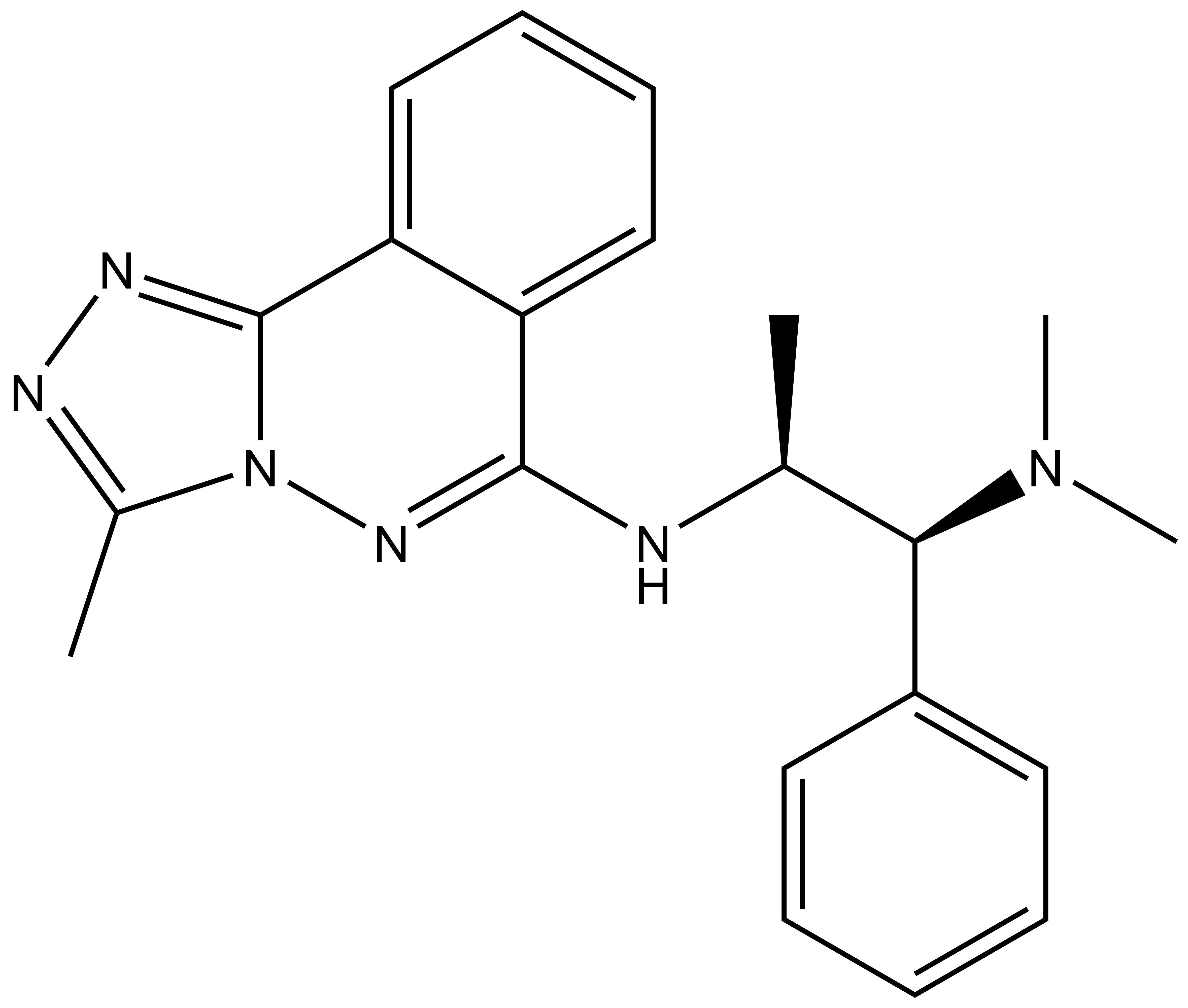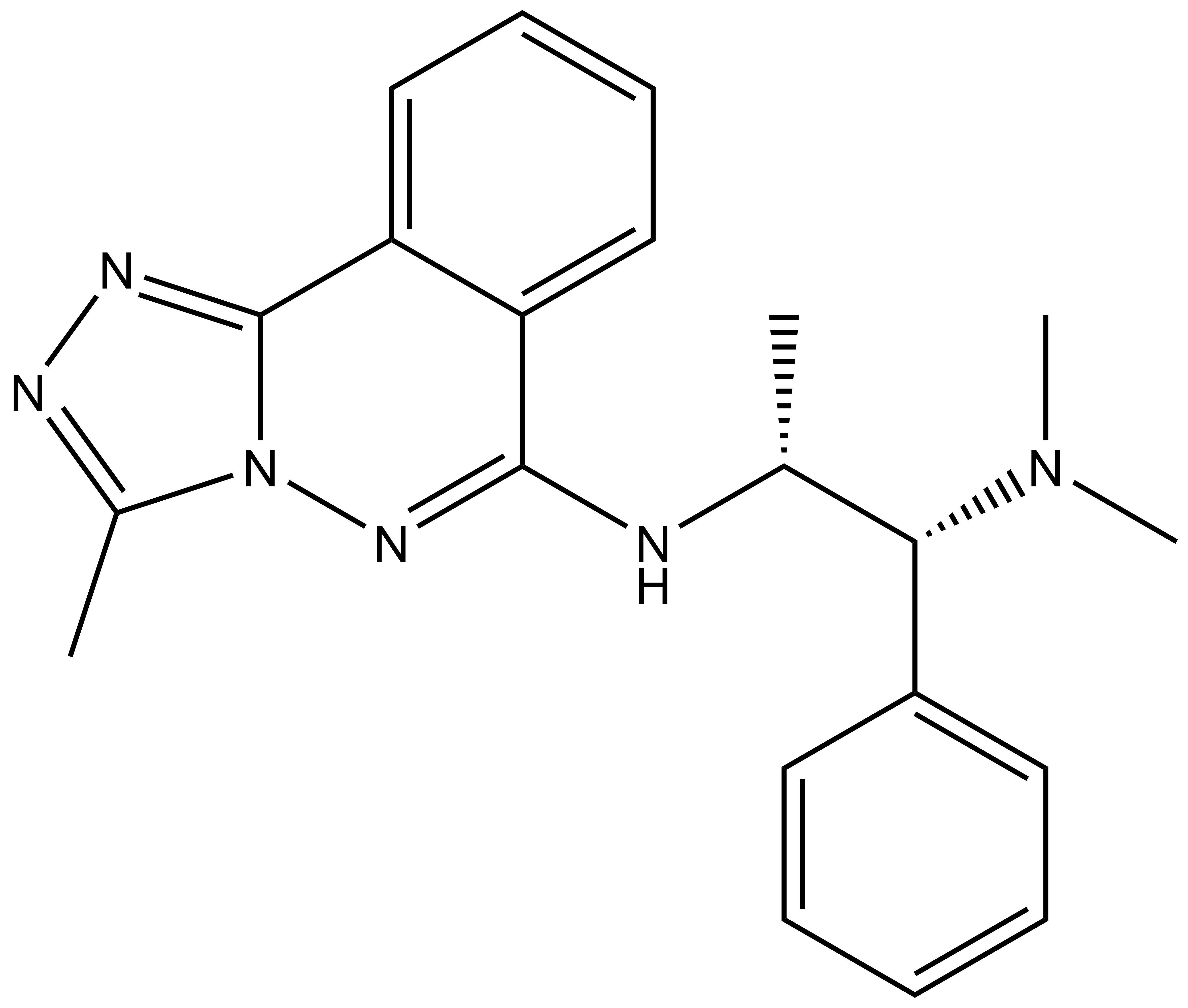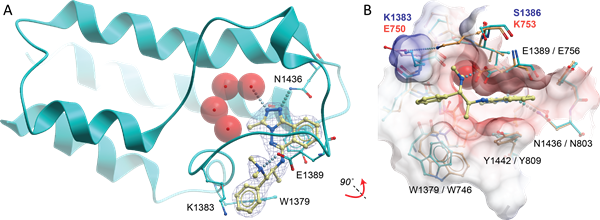This probe (dihydrochloride) is available from Tocris and Cayman Chemical.
| Probe | Negative control | |
 |
|  |
L-Moses |
| D-Moses |

p300/CBP-associated factor (PCAF/KAT2B) and general control non-derepressible 5 (GCN5/KAT2A) are members of subfamily 1 of the bromodomain phylogenetic tree. These multi-domain proteins that have been implicated in retroviral infection, inflammation pathways and cancer development. However, outside of viral replication, little is known about the dependence of these effects on the C-terminal bromodomain. L-Moses is as a chemical probe for the PCAF/GCN5 bromodomain and D-Moses is the enantiomeric negative control. Rational inhibitor design and biophysical characterization led to the discovery of L-Moses. The probe was optimized from the non-selective pan-bromodomain inhibitor, bromosporine to generate a potent, selective (>4500-fold selective over BRD4), permeable and cell-active PCAF/GCN5 bromodomain chemical probe.
Potency
PCAF Ki 47 nM in a HTRF binding competition assay using PCAF bromodomain and a biotin tagged bromodomain ligand.
PCAF KD 48 nM in a BROMOscan assay run at DiscoverX.
GCN5 KD 220 nM in a BROMOscan assay run at DiscoverX.
PCAF KD 126 nM (ITC) using PCAF bromodomain.
GCN5 KD 600 nM (ITC) using GCN5 bromodomain.
Non-family targets
GPCR/Eurofins Panel: In an panel of 130 potential off targets, L-Moses showed no binding (>60% at 10 μM) to all targets except the opioid receptors (mu 100 nM, OPRL1 840 nM, kappa 1,100 nM,) and the 5-HT transporter (220 nM).
Cellular Potency
PCAF: IC50 220 nM in Promega NanoBRET assay, measuring displacement of NanoLuc-tagged truncated bromodomain PCAF from Halo-tagged histone H3.3 in HEK293 cells.
IC50 1.2 μM in NanoBRET assay, measuring displacement of NanoLuc-tagged full-length PCAF from Halo-tagged histone H3.3 in HEK293 cells.
IC50 660 nM for competing pull-down of full-length PCAF from cell lysates using immobilized L-Moses
GCN5: IC50 220 nM for competing pull-down of full-length PCAF from cell lysates using immobilized L-Moses.
Cytoxicity assay:
Toxicity of D-Moses and L-Moses was assessed on peripheral blood mononuclear cells (PBMC) obtained from 5 healthy donors. PBMC were cultured either with D-Moses or L-Moses at concentrations of 0.1, 1 and 10 μM or with a control (DMSO) for 24 hours. Viability of PBMC were then checked using LIVE/DEAD Fixable Aqua Dead Cell Stain Kit (ThermoFisher Scientific). No observed cytotoxicity was observed at any concentration.
| Probe | Negative control | |
 |
|  |
L-Moses |
| D-Moses |
| Physical and chemical properties for L-Moses | |
| Molecular weight | 360.2 |
| Molecular formula | C21H24N6 |
| MollogP | 2.38 |
| PSA | 46.14 |
| No. of chiral centres | 2 |
| No. of rotatable bonds | 5 |
| No. of hydrogen bond acceptors | 4 |
| No. of hydrogen bond donors | 1 |
| Physical and chemical properties for D-Moses (Negative Control) | |
| Molecular weight | 360.2 |
| Molecular formula | C21H24N6 |
| MollogP | 2.38 |
| PSA | 46.14 |
| No. of chiral centres | 2 |
| No. of rotatable bonds | 5 |
| No. of hydrogen bond acceptors | 4 |
| No. of hydrogen bond donors | 1 |
M. Moustakim, P. G. K. Clark, L. Trulli, A. L. Fuentes de Arriba, M. T. Ehebauer, A. Chaikuad, E. J. Murphy, J. Mendez-Johnson, D. Daniels, C.-F. D. Hou, Y.-H. Lin, J. R. Walker, R. Hui, H. Yang, L. Dorrell, C. M. Rogers, O. P. Monteiro, O. Fedorov, K. V. M. Huber, S. Knapp, J. Heer, D. J. Dixon, P. E. Brennan Discovery of a PCAF Bromodomain Chemical Probe. Angew. Chem. Int. Ed. 2017, 56, 827.
Selectivity Bromodomains
>40-fold selectivity over other bromodomain targets. (>4500-fold selective over BRD4). No observable activity on any other bromodomain target <6 µM in a BROMOscan assay run at DiscoverX.